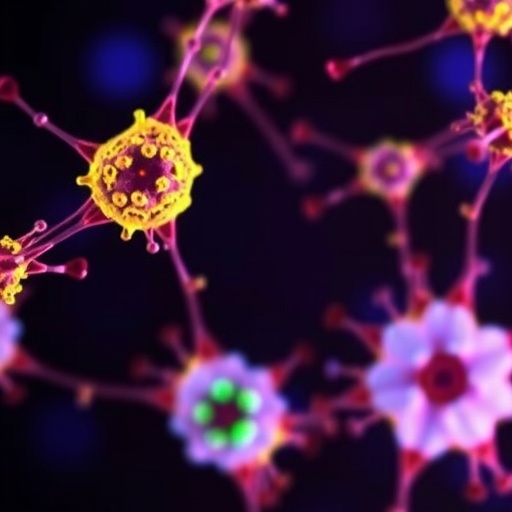Southwest Research Institute (SwRI) has made remarkable strides in the field of regenerative medicine through its innovative application of a newly developed single-use 3D bioreactor. This groundbreaking technology holds the potential to revolutionize how we approach cellular therapies by facilitating the efficient production of induced Pluripotent Stem Cells (iPSCs), which can be derived from various somatic cells, including adult skin and blood. As the demand for personalized medicine escalates, the ability to generate large volumes of iPSCs is paramount, making this development not only timely but essential.
The traditional techniques for producing iPSCs are often labor-intensive and require meticulous manual intervention, limiting scalability. However, the introduction of SwRI’s 3D-printed bioreactor addresses this issue head-on. By leveraging a unique design that enhances the surface-to-volume ratio, this bioreactor allows for more effective cell growth and reduction of cell clumping, which can lead to unwanted differentiation effects. This improvement is crucial because it maintains the integrity of the stem cells, preventing them from developing into unintended cell types during cultivation.
Dr. Nick McMahon, Senior Research Engineer at SwRI and a principal investigator on this project, highlighted the significant advancements made with this bioreactor. He emphasized that the efficiency of harvesting iPSCs in large quantities represents a considerable leap forward in stem cell technology. With these improvements, scientists can more readily explore the therapeutic applications of iPSCs, particularly their potential to regenerate neural tissues. As neural progenitor cells have shown promise in repairing spinal cord injuries, the implications of this research could vastly improve outcomes for patients suffering from such conditions.
The versatility of iPSCs stems from their inherent pluripotent capabilities, which allow them to differentiate into virtually any cell type within the human body. This unique property makes iPSCs a preferable option compared to embryonic stem cells, which are mired in ethical controversies. As such, becoming adept at producing iPSCs safely and efficiently paves the way for their application in regenerative therapies aimed at repairing or replacing damaged tissues. By using a patient’s own cells, these therapies can significantly mitigate the risk of immune rejection, presenting a more bioethical alternative for medical practitioners.
Considering how crucial the first weeks post-injury are in spinal cord injuries, the use of SwRI’s bioreactor could align perfectly with clinical timelines. Studies have illustrated that administering neural progenitor cells during the first 28 days following a spinal cord injury can lead to remarkable recovery and neuronal function restoration. Dr. Jian Ling, an Institute Engineer at SwRI, noted that since the discovery of iPSCs, researchers have relentlessly pursued ways to manipulate these cells effectively, looking for solutions that are both scientifically and ethically sound.
The innovation does not stop at cell production either. SwRI plans to further enhance this technology by introducing automation and creating a streamlined plug-and-play platform for cell replication. This conceptualization of an easily deployable system represents a paradigm shift in cellular manufacturing, potentially expediting the journey from laboratory findings to clinical applications. By minimizing manual processes, SwRI aims to increase the reproducibility and reliability of stem cell therapies, setting new industry standards for cell culture techniques.
Funding for these ground-breaking advancements has been supported through SwRI’s Internal Research and Development Program, which underscores the institute’s commitment to fostering innovation that responds to contemporary medical challenges. In 2024, SwRI allocated over $11 million into research endeavors like this, showcasing a sustained investment in the future of biomedical technology. This financial backing highlights a prioritization of research that not only advances the scientific community but also supports societal health and well-being.
SwRI’s dedication extends into collaborations presented at habitual platforms like the American Association of Pharmaceutical Scientists (AAPS) PharmSci 360. By disseminating findings to engaged audiences, the institute not only shares its advancements but also contributes to an ongoing dialogue across various sectors of the biomedical field. Engaging with peers and experts catalyzes further research, potentially leading to collaborations that can enhance the spectrum of applications for iPSCs.
With the landscape of regenerative medicine constantly evolving, the role of technology such as the SwRI bioreactor cannot be understated. This advancement is not just a technological feat; it is a goldmine for clinical applications that could alleviate suffering caused by injuries and degenerative diseases. The implications of effectively using iPSCs are far-reaching, with possibilities extending into treatments capable of restoring function in damaged organs or tissues, opening new horizons in health care.
As this line of research strengthens and evolves, it carries the promise of establishing a more customizable framework for patient care. The prospect of personalizing medicine by utilizing patients’ own cells to facilitate recovery is groundbreaking, offering a notable divergence from traditional methodologies. This transformation in treatment dynamics reinforces the importance of scientific innovation in addressing healthcare challenges, all while harmonizing ethical considerations that impact the use of stem cells.
As SwRI continues to refine its bioreactor technology, the eventual outcomes are poised to deliver groundbreaking capabilities for cellular therapies that could not only alleviate the burden of injuries but also foster recovery and enhance quality of life. The successful integration of automation with effective stem cell production can feel like a game-changer in regenerative medicine, speeding up the process where it matters the most.
In conclusion, the development of the 3D bioreactor by SwRI represents a significant leap forward in the production of iPSCs, a technology that holds the potential to change the medical landscape through personalized and ethical regenerative therapies. As researchers focus on further advancing these techniques, the future appears bright for the conditions that can benefit from tailored stem cell treatments, marking an exciting era in biomedical innovation.
Subject of Research: Development of a single-use 3D bioreactor for producing induced Pluripotent Stem Cells (iPSCs).
Article Title: Innovations in Regenerative Medicine: Southwest Research Institute’s Advance in 3D Bioreactor Technology
News Publication Date: November 10, 2025
Web References: Southwest Research Institute Internal R&D
References: AAPS PharmSci 360
Image Credits: Credit: Southwest Research Institute
Keywords
Bioreactors, Biotechnology, Cell therapies, Regenerative medicine, Neural stem cells, Progenitor cells




